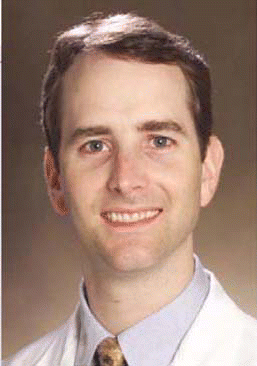NAPLES, Fla.—Certain serious childhood head and neck infections tend to occur in particular sites by age, according to research presented here at the meeting of the Southern Section of the Triological Society.
Explore This Issue
May 2006Exactly why that should occur remains controversial, said John M. Schweinfurth, MD, Associate Professor of Otolaryngology and Communicative Sciences at the University of Mississippi Medical Center in Jackson.
“Head and neck infections are not random occurrences base on exposure alone: host factors are clearly important,” he said. “Given the lack of correlation with school age, the results cannot be explained on the basis of exposure alone.”
T-Cells, Immune Response Key
Dr. Schweinfurth suggested that further study of the role of certain types of viral infections, T-cell activation, and overall immune system response is warranted to figure out why some severe infections occur early and others occur late.
“We did find significant age differences by site,” Dr. Schweinfurth said. He said the differences by age reached significance at the p < .001 level.
“These findings are not completely explained by exposure to infectious agents. A better understanding of signaling that occurs between T-cells in response to infection may provide a better explanation of this process,” he said.
The host immune response is likely the most important determinant of the development of an abscess.
That understanding is now being studied by several scientists, he said. He suggested that abscesses development has been associated with interleukin-8 and -17, and can also be stimulated by Zwitterionic bacterial polysaccharides—all of which affect the T-cell response.
“The aggregation and migration of sensitized T-cell lymphocytes may be responsible for the progression in site incidence of severe infections of the head and neck with age,” Dr. Schweinfurth said. “Patterns identified in the present study are cause for further investigation.”
He suggested that host factors may also be involved, including a genetic disposition to tonsillitis and how T-cells respond to infection in early infancy. Viral infection may play a role as well. Epstein-Bar virus (EBV) can cause lymphadenitis which results in secondary abscess formation in young children due to intense, local inflammation.
Study Protocols
He looked specifically at the incidence of abscesses in these children. An abscess can be described as an intense, localized immune response characterized by recruitment of many polymorphonuclear leukocytes to a restricted side, inflammation, and a locally compromised circulation. The host immune response is likely the most important determinant of the development of an abscess. Its formation is an immune response to the products of a bacterial cell.
“The aggregation and migration of sensitized T-cell lymphocytes may be responsible for the progression in site incidence of sever infections of the head and neck with age.” – —John M. Schweinfurth, MD

Leave a Reply